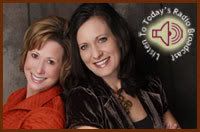by Lisa Morrone, PT
You feel it coming on—Oh please, not today… (As if any day was a good day to have a migraine!) Sadly you resign yourself to the inevitability of this fast approaching “pain storm” by making a mental list of all the things you won’t be getting done in the next day or so. And then you hunker down and brace for its impact.
Thirty-three million Americans suffer from migraines on a regular basis. Most who’ve endured head pain for years find their only “help” comes from within their medicine cabinets. Over-the-counter and prescription medication is the traditional band-aid offered to migraineurs. These chemicals work primarily by reducing symptoms (pain, nausea, and vomiting), and at times they can even be successful at diverting a full-blown migraine attack. But here is where I take issue with this time-honored treatment approach: It doesn’t lend itself to curing migraines, it merely assists in manages them!
Not only does medication not offer a cure, it also can be part of the problem! When a person regularly takes medication to keep their head pain under control—whether it is over-the counter-medication, like Excedrin or Tylenol, or doctor-prescribed meds such as Cafergot or Imitrex—their brain actually gets used to the steady diet of those brain-altering chemicals. In fact it can become downright addicted to them! So what does an addicted brain do when its chemical supply is running low? It does what it knows will get it some more chemicals—it produces another headache. Very clever, huh?!
Migraine sufferers have been shown to have a lower headache “threshold” than people who do not suffer with this condition. Research has proven that their brains are actually more sensitive to the environment around them, and to their own body’s chemical and mechanical problems. A migraine threshold (starting point) is reached by the piling up of numerous annoyances known as headache triggers. When a migraineur’s “stack” of irritants reaches their threshold point, head pain begins.
Many who struggle with migraines have been told to avoid particular foods which have a track record of triggering head pain. The most common culprits are red wine, chocolate, aged cheeses or meats, foods high in nitrates (bacon, hot dogs, certain lunch meats), and MSG-laden items such as Chinese food, canned soups, frozen meals. And while it’s true that food can trigger migraines, so can: stress, loss of sleep, noxious smells and sounds, and flashing lights. With countless articles and books being written on the subject of migraine triggers, few discuss the trigger which I believe is first one (and usually the last) that needs addressing: the neck.
As a physical therapist I have been treating patients with head pain for over two decades now, and the most influential trigger that I have found in my patients who experience migraines is upper neck dysfunction. Muscle spasms, joint restrictions, and disc bulging plays a critical role in producing head pain—especially in those who report neck pain/tension prior to the onset of their migraine. In my own clinical practice, I have had tremendous success without having to modify the diet, environment, or lifestyles of my patients because after I remove the much bigger issue—their neck dysfunction—all those other triggers that used to be a problem for my patients no longer stack high enough to produce a migraine (monthly hormone cycles included). In twenty years I’ve only had one patient whose migraines were not cured altogether with a manual (hands-on) physical therapy treatment approach.
In my book, Overcoming Headaches and Migraines, I outline a non-traditional, non-medicinal approach to curing chronic head pain, namely by addressing the neck component, or trigger. I provide self-treatment methods as well as description of specific manual therapy treatment techniques that need to be employed in order to free migraine sufferers from a life of pain and medication. You’ll read story after story from patients who have been released from their head pain sentences and are now able to live a life free from head pain. Isn’t it time you took a detour away from traditional head pain management, and instead start moving toward a cure?
Lisa Morrone, PT is passionate about three things: her Savior, her family, and her calling, "To equip the Body of Christ to age well, live long, and serve strong!" A physical therapist, professor, author, and speaker, Lisa began her company, Restoring Your Temple® in 2006 as an avenue to educate, heal, and empower the Church to do the work of Christ. Lisa is the author of three books including her latest, Overcoming Overeating: It's Not What You Eat, It's What's Eating You! She has been featured on the 700 Club, multiple national and international radio broadcasts, and the Proverbs 31 magazine. Visit her website: www.RestoringYourTemple.com.
Lisa’s book, Overcoming Headaches and Migraines: Clinically Proven Cure For Chronic Pain is available here.
Wednesday, September 8, 2010
Subscribe to:
Posts (Atom)











